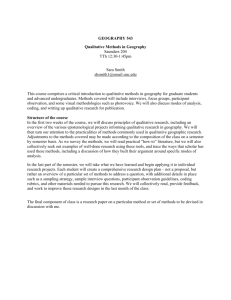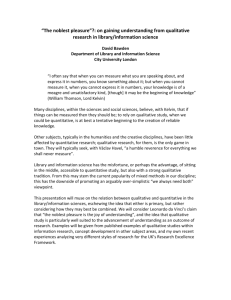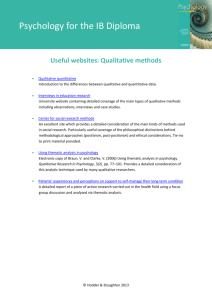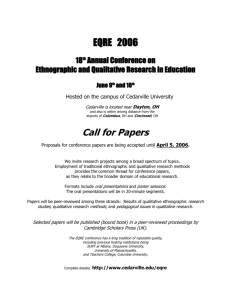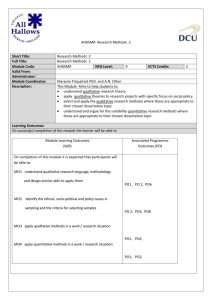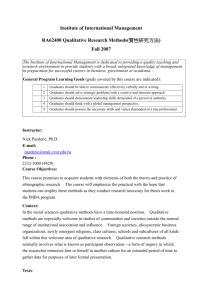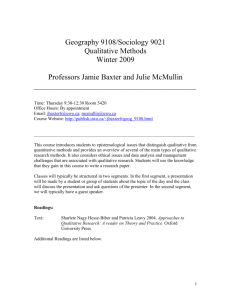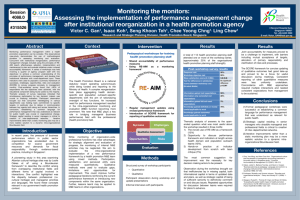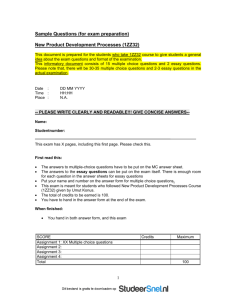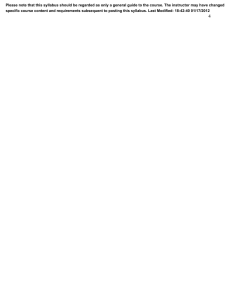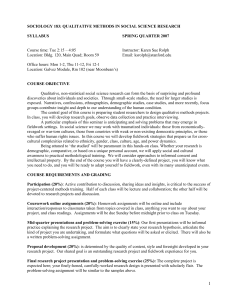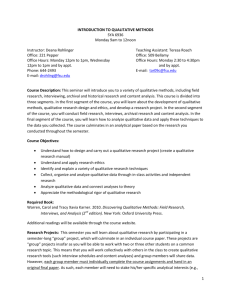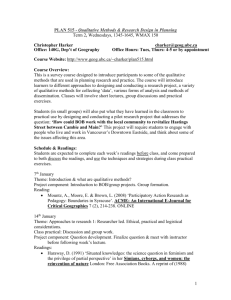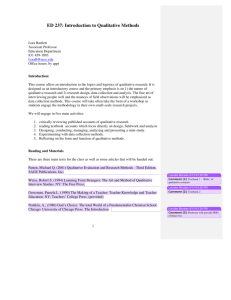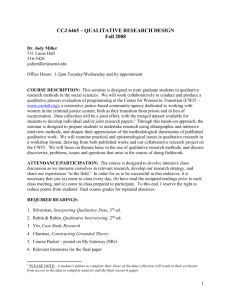CMNS 262 2012 assignment two instructions_summer2012
advertisement
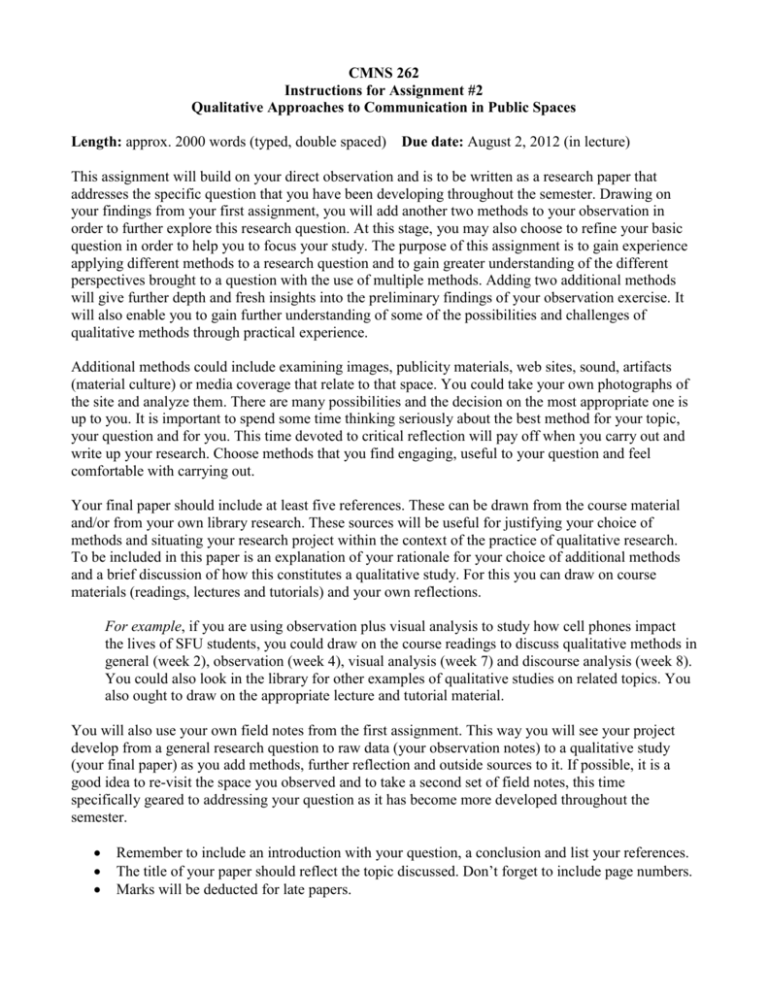
CMNS 262 Instructions for Assignment #2 Qualitative Approaches to Communication in Public Spaces Length: approx. 2000 words (typed, double spaced) Due date: August 2, 2012 (in lecture) This assignment will build on your direct observation and is to be written as a research paper that addresses the specific question that you have been developing throughout the semester. Drawing on your findings from your first assignment, you will add another two methods to your observation in order to further explore this research question. At this stage, you may also choose to refine your basic question in order to help you to focus your study. The purpose of this assignment is to gain experience applying different methods to a research question and to gain greater understanding of the different perspectives brought to a question with the use of multiple methods. Adding two additional methods will give further depth and fresh insights into the preliminary findings of your observation exercise. It will also enable you to gain further understanding of some of the possibilities and challenges of qualitative methods through practical experience. Additional methods could include examining images, publicity materials, web sites, sound, artifacts (material culture) or media coverage that relate to that space. You could take your own photographs of the site and analyze them. There are many possibilities and the decision on the most appropriate one is up to you. It is important to spend some time thinking seriously about the best method for your topic, your question and for you. This time devoted to critical reflection will pay off when you carry out and write up your research. Choose methods that you find engaging, useful to your question and feel comfortable with carrying out. Your final paper should include at least five references. These can be drawn from the course material and/or from your own library research. These sources will be useful for justifying your choice of methods and situating your research project within the context of the practice of qualitative research. To be included in this paper is an explanation of your rationale for your choice of additional methods and a brief discussion of how this constitutes a qualitative study. For this you can draw on course materials (readings, lectures and tutorials) and your own reflections. For example, if you are using observation plus visual analysis to study how cell phones impact the lives of SFU students, you could draw on the course readings to discuss qualitative methods in general (week 2), observation (week 4), visual analysis (week 7) and discourse analysis (week 8). You could also look in the library for other examples of qualitative studies on related topics. You also ought to draw on the appropriate lecture and tutorial material. You will also use your own field notes from the first assignment. This way you will see your project develop from a general research question to raw data (your observation notes) to a qualitative study (your final paper) as you add methods, further reflection and outside sources to it. If possible, it is a good idea to re-visit the space you observed and to take a second set of field notes, this time specifically geared to addressing your question as it has become more developed throughout the semester. Remember to include an introduction with your question, a conclusion and list your references. The title of your paper should reflect the topic discussed. Don’t forget to include page numbers. Marks will be deducted for late papers. Basic Components: An introduction that states your research question and briefly describes the methods you have chosen to address it. A justification of your choice of methods and a brief explanation of why this is a qualitative study (this can be integrated into your introduction or come in a separate section after the introduction). Here you can use a reference from the course and/or you can use material discussed in lecture and tutorial. The body of your paper will be devoted to answering your question through a discussion of the methods you have used. It is helpful to have the question on hand while you are writing (helpful hint: stick a post-it note to your computer with the question written on it and when you start to feel unsure if the direction you are going in is relevant then refer to the question and ask yourself if what you are writing helps to answer the question itself). Five references, either from the course or from library research (it is up to you), will help to support your choice and application of the particular methods you are using. A conclusion. Here you can sum up your findings. If you like, you could also take some time here to briefly discuss some of the implications of your findings, mention any further questions that arose for you in the research process that you think would be helpful directions for future research.


